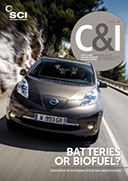Researchers have developed a non-invasive method for screening for osteoporosis using the sensors in a smartphone, they reported at AAAS meeting in Boston in February. The technology exploits motion sensors called accelerometers that switch mobile phones from landscape to portrait mode when tilted on its side.
Simply tapping the end of the elbow while holding the phone in one hand allows the accelerometers to pick up on frequency changes that determine whether bone is hollowed or less dense as in the case of osteoporosis. The method could provide an initial screening tool before X-rays of bone density in the clinic, said Shwetak Patel, professor of computer science & engineering at the University of Washington in Seattle.
Smartphones are already well established tools in the world of mobile health for collecting health data, driven by innovations such as step and calorie counters. A study in 2016 revealed there are around 165,000 healthcare apps currently on the marketplace, which have been downloaded more than a billion times, said Greg Hager, professor of computer science at Johns Hopkins University. However, only a tiny fraction of these are what he calls evidence-based. A survey of 100 apps for mental health, for example, found only five were based on scientific evidence, he pointed out, and that none of these five was publicly available.
‘A lot of people today have fitbits and will check: did I do 10k steps today?’ Hager said. ‘But why is 10k steps important? Because in the 1960s somebody in Japan worked out the average man burned x calories if he did 10k steps. But is that the right number for each of you in this room?’
A rare example of a science based app is the Metabolic Compass developed by Johns Hopkins University researchers, he pointed out, which tracks circadian rhythms when eating, sleeping and walking. Unusually, it captures the data in a standardised way and has an in-built consent form so that the data can be exchanged with electronic health records.
‘There is a huge opportunity to integrate science into these apps so we can actually use the app to further science,’ Hager said.
The capabilities of smartphones, meanwhile, are advancing rapidly, said Patel. His group at the University of Washington is also in the process of commercialising other apps that use the phone camera and flash to determine iron and haemoglobin levels in the blood, as well as an app that leverages the microphone to assess lung function for people with asthma and chronic obstructive pulmonary disease (COPD). In the latter case, algorithms interpret the movement of the microphone when it is breathed on as a flow rate - much like the way a clinical spirometer works, Patel said.
Many of the group’s apps are already compatible with the charge codes needed by US medical insurance providers. However, ‘The ultimate goal is that because of the ubiquity of the phones and the lower cost nature of deploying the technology that it should bring down diagnostic costs dramatically,’ Patel said. ‘Some of the phone’s capabilities are even beyond those in the primary care clinic in developing countries.’
At Georgia Tech in Atlanta, Elizabeth Mynatt, executive director of the Institute for People and Technology, is interested in exploiting mobile technologies to support patients in managing daily chronic diseases such as diabetes and cancer. They enable diabetes patients, for example, to ‘become their own detectives,’ Mynatt said, by setting up their own experiments to decide what foods to eat to manage their blood sugar levels. The group is also working with breast cancer patients, where mobile technologies play an important safety role by keeping immunosuppressed patients out of the emergency room by advising them on different treatment options and whether their symptoms are normal at this treatment stage.
Mynatt is interested in how mobile phones can help bridge the gap between different socioeconomic groups and improve health for the poor. Apps also useful aids to improve patient compliance, she added, reminding patients when they need to take medication.
Another emerging use for mobile phones, Hager continued, is for new types of ‘micro randomised’ trials to assess the effectiveness of interventions such as drugs or other therapies. The current standard of evidence in assessing an intervention such as a drug or other therapy involves a randomised clinical trial at an average cost of $12m per trial, he noted. Micro randomised trials can be done at a fraction of the cost on a mobile phone, and also assess patient history and decide dynamically what interventions to use according to patient responses.
Another example of an evidence based apps referred to during the discussions, meanwhile, included Project BigLife compiled by researchers in Canada, which includes a life expectancy calculator to highlight how different factors such as a person’s diet, height and weight and whether they have had a stroke etc, affect health.
The meeting discussions coincided with the publication of a new white paper research roadmap for mobile health, Smart and Pervasive Health Research Roadmap.





